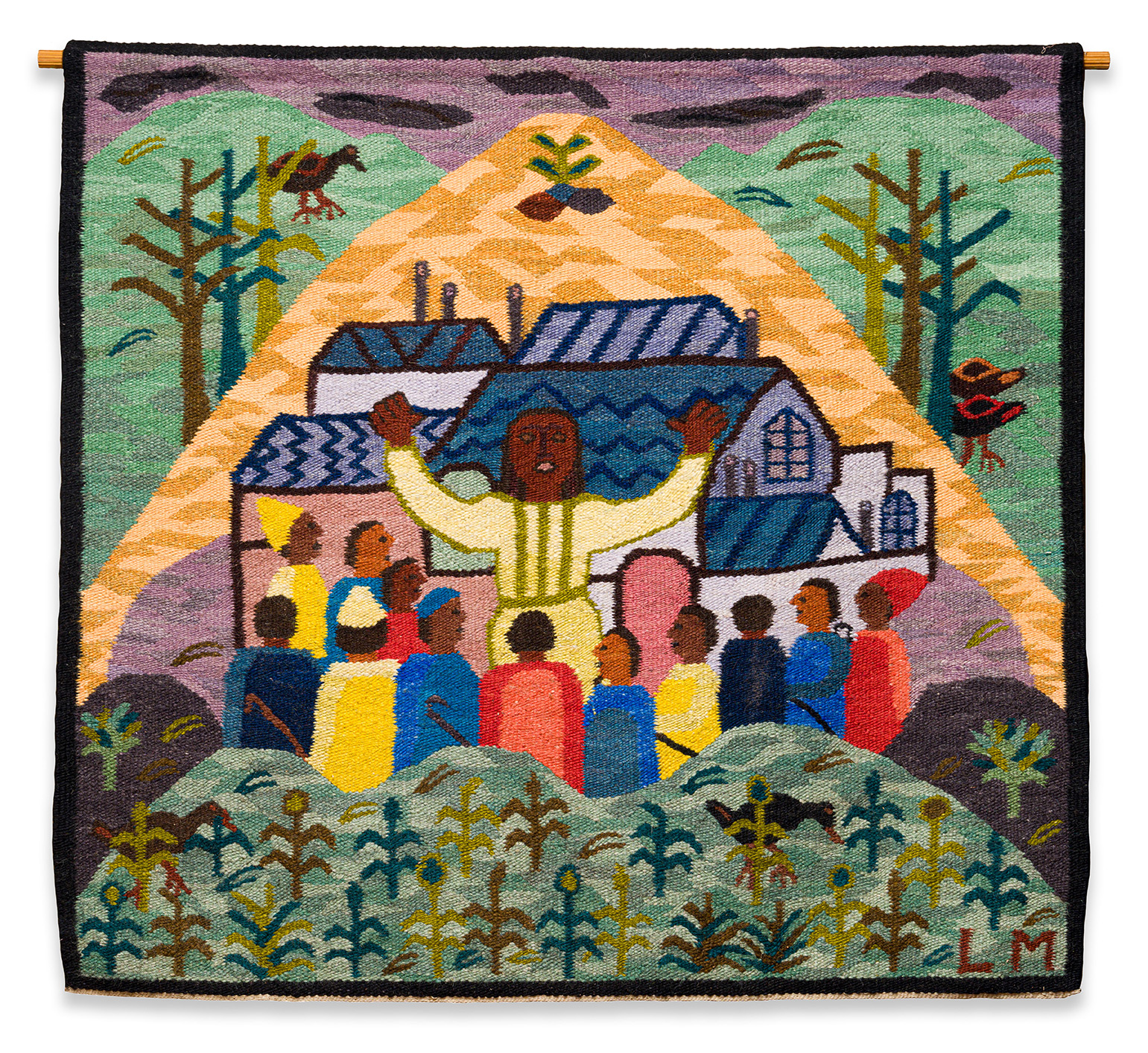Lyness Magwaza
BIOGRAPHY
Lyness Magwaza is associated with Rorkes Drift Arts and Craft Centre in rural KwaZulu- Natal and is recognised for her tapestries, which communicate themes of community, identity and the experiences of women in South Africa.
Established by Swedish missionaries Peder and Ulla Gowenius in 1962, the Evangelical Lutheran Church (ELC) Art and Craft Centre nurtured and gave an outlet to many talented artists who were denied the opportunity to further their craft due mainly to then newly established Bantu Education policies. Inititally, the Centre concentrated on weaving and pottery and this soon mushroomed into a printmaking studio attracting mainly male artists from all over the country and even beyond its borders.
The Centre’s tapestry artists, trained to weave by Gowenius (and later Allina Ndebele), produced visual histories of their own as early as the 1960s.
‘South African institutions were slow to acquire artworks by black women,’ writes Phillipa Hobbes. ‘When they did, among the first were tapestries from a Swedish art centre at Rorke’s Drift. However, it remains unknown that many works by these marginalised African women had entered Swedish collections before then, showing in acclaimed exhibitions such as Woven in Africa, which opened at Röhsska Museum of Design and Craft in Göteborg in 1965.’
Throughout her career, Magwaza has exhibited her work both locally and internationally. Her works are admired for their intricate details, bold use of colour and seamless blend of traditional and modern elements. In addition to her personal artistic practice, Magwaza has collaborated with community projects aimed at empowering women through creative expression, particularly focusing on preserving indigenous artistic practices.
In August 2022, Magwaza’s work was included in Her…, a group exhibition of painting, sculpture and printing from the Sanlam Art Collection celebrating Women Artists in Women’s Month.
Despite her recognition, detailed biographical information about Magwaza is somewhat limited in readily available public sources, underscoring the importance of further documenting her contributions to South African art.


